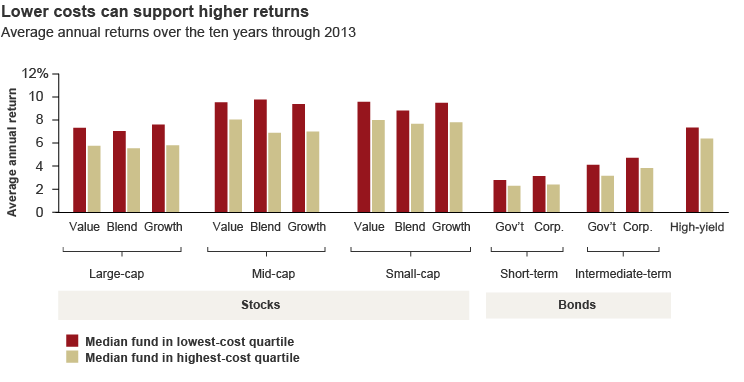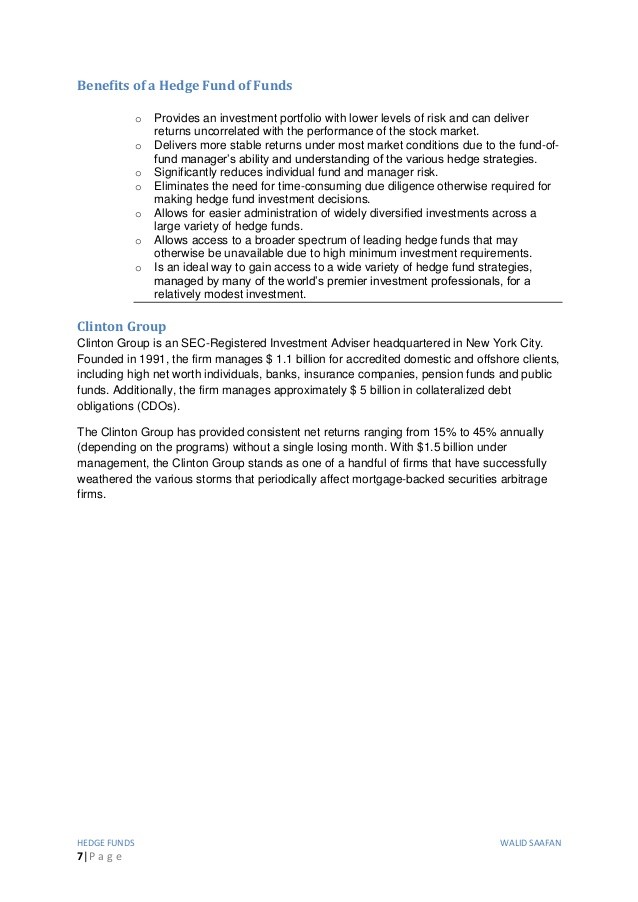Enhanced Index Funds Can They Deliver LowRisk Returns_3
Post on: 4 Май, 2015 No Comment

Rob Arnott on PIMCO’s Fundamental-Index-Based Equity Strategies
Article Introduction
Article Main Body
With equities likely to deliver relatively modest returns prospectively, alpha may become a more important component of returns from equity allocations. The PIMCO Fundamental IndexPLUS Strategies are designed to provide multiple sources of alpha (risk-adjusted return above the benchmark) in addition to equity market returns. They use derivatives to replicate the enhanced versions of the Research Affiliates Fundamental Equity Indexes (RAFI) and back this exposure with an absolute return bond portfolio managed by PIMCO. The RAFI approach, which weights companies by their economic footprint, seeks to outperform traditional indexes, which are based on market capitalization. Because the cost of replicating the RAFI using derivatives is linked to a money market rate, alpha from the bond portfolio – the PLUS component – is a function of PIMCO’s ability to outperform this money market rate, net of fees. The Fundamental IndexPLUS Strategies thus provide two independent sources of potential alpha as well as potential diversification benefits.
These strategies are part of PIMCO’s StocksPLUS suite, which was recognized in 2013 when Lipper named PIMCO the best large equity manager in the U.S. for the fourth year in a row. Rob Arnott is the founder and chairman of PIMCO subadvisor Research Affiliates, which designed and maintains the Enhanced RAFI used in these strategies. In this interview, Arnott, the co-author of the Financial Analysts Journal’s 2005 award-winning article, “Fundamental Indexation,” shares his thoughts on the Fundamental Index methodology, the Fundamental IndexPLUS AR equity strategies and the equity-market-neutral version, Fundamental Advantage.
Q: Fundamental indexation challenged basic tenets of finance. How and why did you develop it?
A: I’d long thought that traditional indexation, which weights stocks in proportion to their popularity and price, made no sense. But in the early 2000s, following the dramatic tech-driven decline in stock index levels worldwide, a friend and long-time pension executive said, “There’s got to be a better way to index.” That led me to push this idea to the front burner. To my astonishment, the first test we ran, which weighted companies by sales, not market capitalization, produced a 2.5% excess return compounded annually for over 30 years.
Q: PIMCO’s Fundamental IndexPLUS AR Strategies use an enhanced version of the RAFI. How do they differ?
A: The standard versions gauge a company’s economic footprint on publicly available financial data, including sales, cash flow, book value and dividends. Each helps define the relative size of a particular company and determine the corresponding weights in the index. The enhanced versions incorporate additional factors such as net operating assets (an indication of the aggressiveness of a company’s accounting), debt coverage ratios and buybacks. We also have features with Enhanced RAFI that spread the active weights more efficiently and rebalance with an eye toward lowering market impact and avoiding “falling knives.” The goal is a RAFI that’s a little higher quality and offers a modest improvement to long-term annualized return potential.
Q: Launched in 2005, the first PIMCO Fundamental IndexPLUS AR Strategy provides exposure to the U.S. large company Enhanced RAFI. Subsequent versions target emerging markets (EM), small company and international equities. What’s similar or different about these?
A: The methodology is the same. Differences are largely geographic. It’s also been our experience that the alpha potential is even greater in less efficient marketplaces. So, for example, the EM version has a higher excess return potential than the U.S. large company version. For PIMCO’s clients, what’s important is that there’s a reasonably complete tool kit to help improve return potential within their U.S. large, U.S. small, international and EM equity allocations.
Q: How do Enhanced RAFI respond to differing market environments? What are the primary sources of value added?
A: Enhanced RAFI have a pronounced value tilt relative to the cap-weighted market, although the way I think about it is that the market has a growth tilt relative to the economy, favoring companies with wonderful growth outlooks and shunning companies that look like they are facing challenges. Enhanced RAFI tend to do better in weak equity markets, which can be particularly savage to companies trading at the highest valuation multiples. In contrast, we tend to do less well during momentum-driven equity markets that are chasing and rewarding every growth story. The value tilt is profitable more often than not. But it’s not the primary source of incremental return. Rather, what tends to be both more profitable over long periods and more reliable as a source of incremental return is contra-trading against the market’s most extravagant bets – which are those most likely to be wrong – and getting back to an index that mirrors the look and composition of the macro economy.
Q: PIMCO’s Fundamental IndexPLUS AR Strategies are an uncommon way to gain equity market exposure. Yet they have placed among the top in their respective equity peer groups. What is the primary value proposition?
A: Actually, there are multiple value propositions. First, there’s the portable alpha approach PIMCO helped to pioneer in the mid 1980s, which combines derivatives-based equity market exposure with an independent source of potential extra return – a PIMCO bond portfolio. Fundamental IndexPLUS AR is designed to add an additional layer of alpha by gaining exposure to the Enhanced RAFI indexes via swaps. Relative to cap-weighted indexes, this provides multiple independent sources of potential excess return: the return of the absolute return bond portfolio relative to the money market rate plus the alpha of the Enhanced RAFI. In my view, the multiple layers of diversified incremental return potential really set the Fundamental IndexPLUS AR strategies apart.

Q: How would you categorize these strategies? What bucket are they in – equities, bonds, something else?
A: It strikes me as genuinely bizarre to categorize the Fundamental IndexPLUS AR suite as anything but equity strategies. Well over 90% of the risk comes from equity with the swap into the Enhanced RAFI. Sure, they use a bond foundation to manage the collateral but it’s done with an emphasis on bond alpha, not systematic bond beta. The objective of outperforming the equity market with equity-market-like risk is also clearly that of an equity strategy.
Q: The U.S. equity-market-neutral strategy, PIMCO Fundamental Advantage AR, just passed its five-year anniversary. Last year, PIMCO launched a global version, Worldwide Fundamental Advantage AR. How do these approaches differ from the Fundamental IndexPLUS Strategies?
A: Just like the Fundamental IndexPLUS AR strategies, the Fundamental Advantage AR strategies are designed to provide multiple layers of alpha. But suppose you don’t want the beta of the equity market. Then why not simply sell stocks to neutralize it? That’s all Fundamental Advantage does – it shorts cap-weighted index exposure to get rid of the equity beta and isolate Enhanced RAFI alpha while still seeking to benefit from the incremental return potential of the absolute return bond portfolio. It’s a beautiful way to create a portfolio that seeks alpha, not beta. The original version captures potential Enhanced RAFI excess returns in the U.S. large cap markets and the recently launched global (Worldwide) version expresses the market-neutral strategy across 18 countries. As these are designed to have zero outright exposure to the equity market, most clients categorize the Fundamental Advantage strategies as alternative equity-market-neutral- or absolute-return-oriented investments.
Q: How might investors use the Fundamental Advantage Strategies in their portfolios?
A: The Fundamental Advantage Strategies are designed to provide powerful diversification benefits based on the potential for returns to be relatively uncorrelated with traditional investment portfolios. They also do not reference a market index for outperformance. Rather, they are designed to outperform a money market rate and have the potential to deliver attractive positive returns even during negative stock and bond markets. As such, these strategies are most commonly used as a liquid alternative within portfolios. I also view the Fundamental Advantage suite as attractive go-to strategies when investors want a defensive investment posture given PIMCO’s broad discretion in the absolute return bond portfolio and equity-market-neutral positioning.
Q: Any additional points?
A: In my view, the Fundamental IndexPLUS and Fundamental Advantage Strategies are a unique and elegant means to seek to capitalize on structural sources of return and diversification to deliver potentially powerful equity market outperformance and positive absolute returns. And looking forward, there is reason to believe that both components can potentially deliver attractive value to investors. On the bond side, PIMCO has flexible guidelines for managing the fixed income component versus a money market interest rate, including an allowable duration range of −3 to +8 years. As a result, PIMCO can potentially add value even in a rising rate environment. On the Enhanced RAFI side, we have seen over the past seven years that volatile markets create opportunities for profitable contra-trading across sectors, countries and individual stocks. Does anybody think we’re going to see less volatility in the years ahead? Not me. Further, the results are all the more impressive given the headwinds value-tilted strategies have faced over the past seven years. If value takes over market leadership in the years ahead, we might see an even more fruitful backdrop for the Enhanced RAFI approach.














